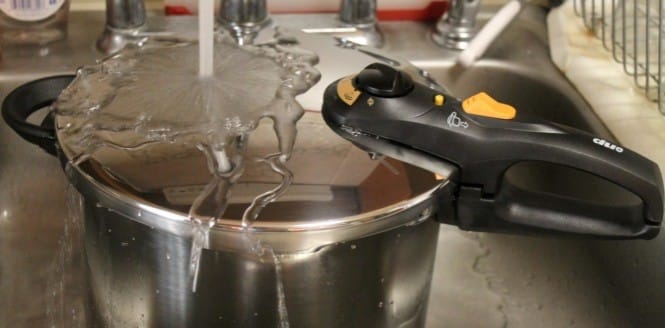
Pressure cookers are one of the most-used appliances in kitchens. Its ability to cook food in different ways in a significantly shortened period of time makes it so. Also, pressure cookers play a huge role in the preparation of other components of a meal.
The appliance basically heats up the liquid inside the vessel and uses the steam it emits to cook whatever is inside it much faster. Because the vessel is enclosed, it takes liquids a much higher temperature to boil (at least 121 degrees Celsius) and this super-heated liquid also contributes to the hastening of the cooking process.
One of the key features of the pressure cooker is being able to manipulate the pressure inside the pot. The pressure is defined in terms of pounds per square inch (psi). Low pressure settings usually start at 3 psi, medium settings at 10 and high at 15. Think of the psi as the equivalent of the amount of heat generated by an oven.
How do pressure cookers cook your food?
The enclosed nature of the pressure cooker allows a buildup of pressure inside the vessel. This results in two things. Firstly, the temperature at which the liquid inside the appliance boils is increased. Secondly, the pressure cooker pushes down the pressure buildup inside the pot on towards the food. These two factors are the very reason why pressure cookers are able to cook food very fast.
Parts of a pressure cooker
A pressure cooker has five parts. These are the whistle, valve, lid, rubber ring and pot. The rubber ring ensures that no air escapes the container. The valve located on top of the cooker is designed to release pressure inside the pot after reaching a certain amount of pressure. This safety measure is put in place to avoid buildups which can cause the lid of the pot flying off, as discussed in article 1. Finally, the whistle tells the user if the food has already finished cooking.
There are many ways of opening a pressure cooker!
One of the main indicators that it is safe to open a pressure cooker is when the whistle starts making noise. This means that food is cooked and should be taken out as to avoid overcooking. Some techniques do not wait for the whistle to blow though and this depends on the recipes.
Below are some ways of safely opening a pressure cooker
The first method, referred to as the natural release method, involves taking out the pressure cooker out of the stove and letting it cool. This is also the most common opening method for electric pressure cookers like the instant pot. This will then cause the pressure to subside inside the pot. It is recommended that one wait for at least 10 minutes before opening the lid. It should be noted that even though the pressure cooker is off the stove, it is still cooking the contents of the container. Thus, this technique should be employed only on thick meats and broths.
The second method is called the quick-release method. In this method, pressure from the container is immediately released by pressing the valve and letting it go immediately. All pressure cookers have a valve in place for this kind of release so it is more convenient to do so. Also, this is done to stagger the addition of ingredients. For example, use this method to add vegetables toward the end when cooking stew as to avoid overcooking the liquid.
The last method is the cold-water release method. This method is done for fast-cooking items such as vegetables. In this method, place the pressure cooker underneath the sink but not directly over the valve. Turn on the faucet and, using a spoon or any object of convenience, gently lift the valve to release the pressure. Do not do this method for electric pressure cookers.
One way not to open a pressure cooker
One of the ways highly recommended not to open a pressure cooker is by placing the pressure cooker in a bowl of water a couple inches high to cool it. This method, the base immersion method, is found to be damaging to modern pressure cookers because it can warp the aluminum side and base of the cooker.
You should also remember to let a pressure cooker fully release pressure before opening it especially if you have overfilled your pressure cooker as I described on this post.